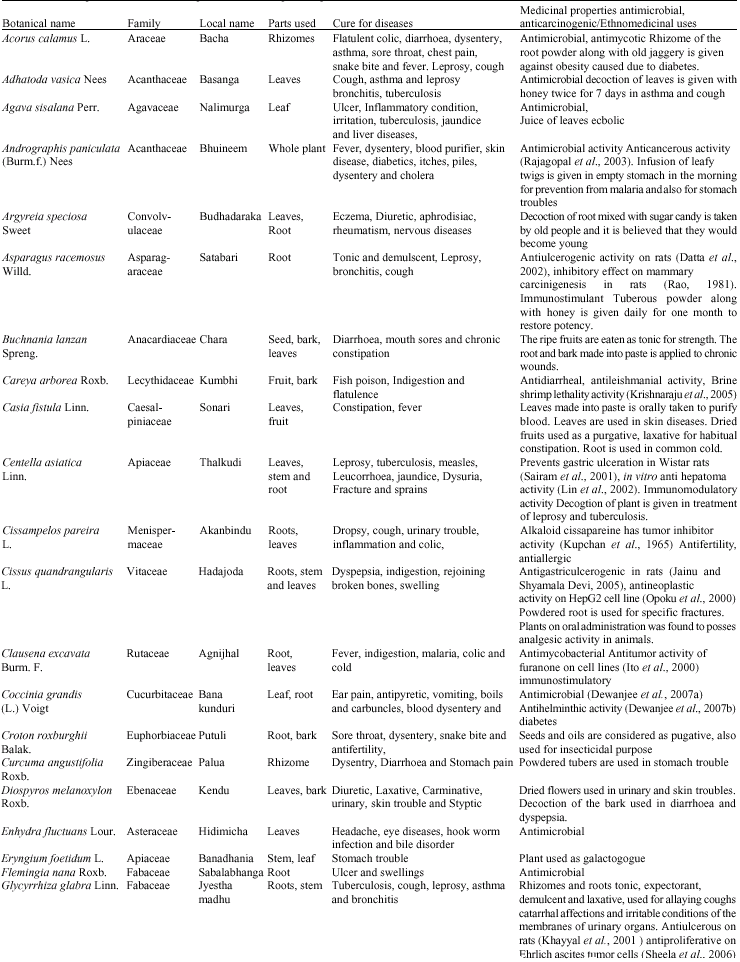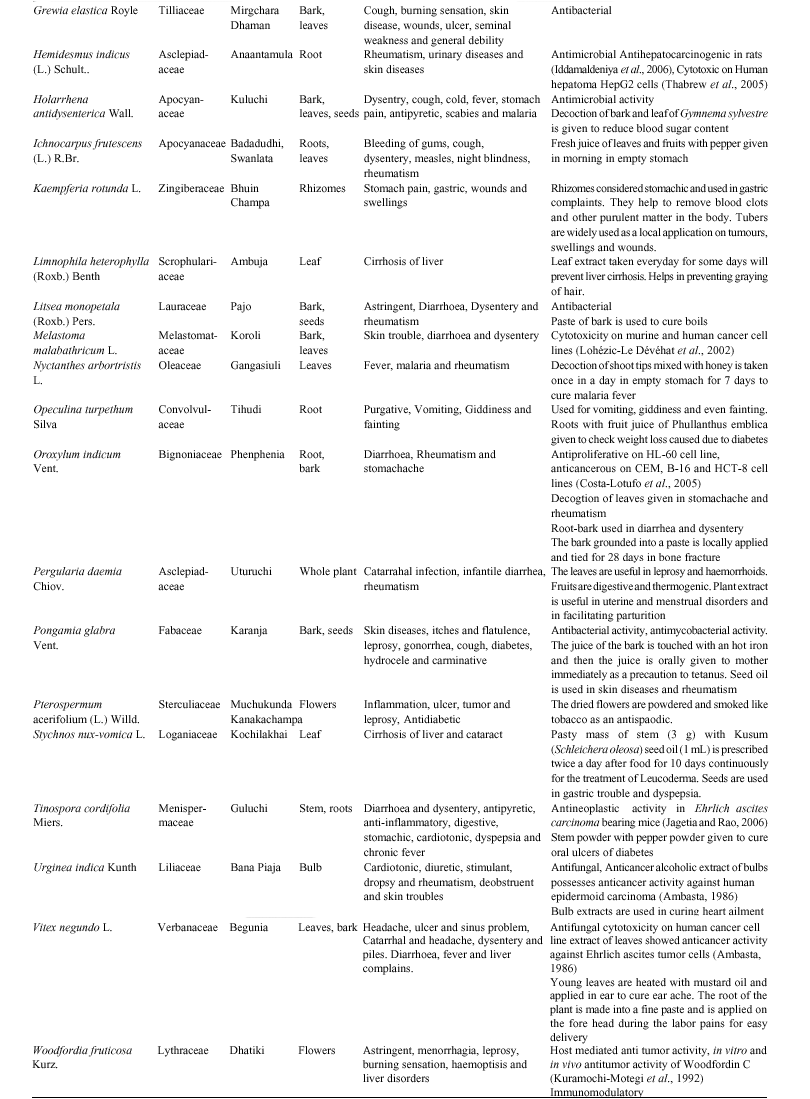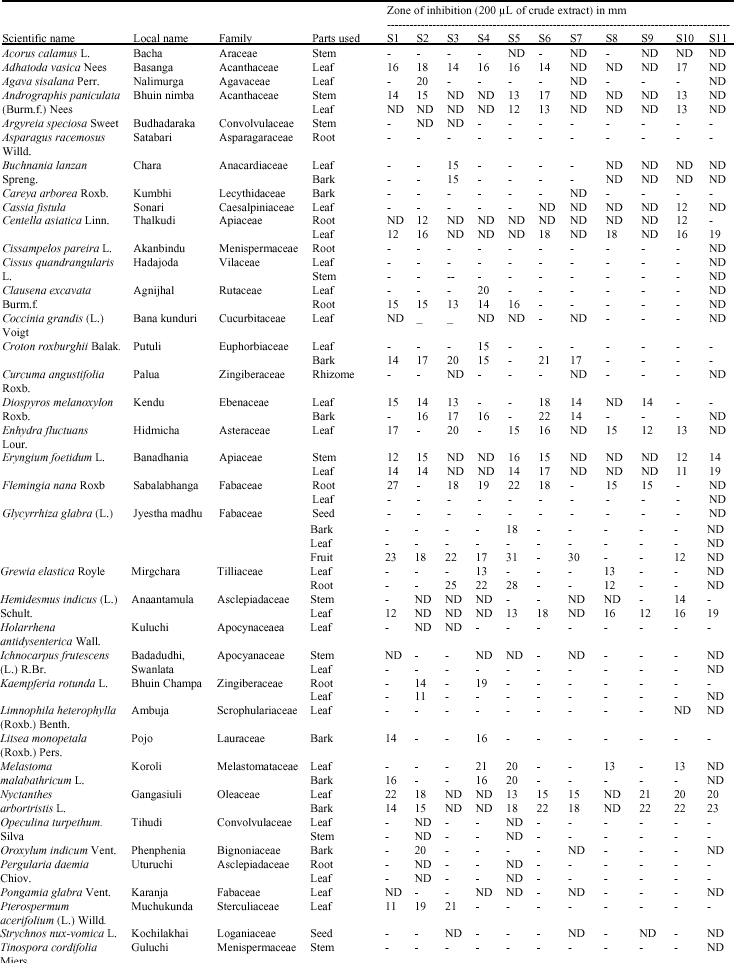Research Article
Antimicrobial Activity and Ethnomedicinal Uses of Some Medicinal Plants from Similipal Biosphere Reserve, Orissa
P.G. Department of Biotechnology,North Orissa University, Baripada-757003, Orissa, India
S.K. Panda
P.G. Department of Zoology, North Orissa University, Baripada-757003, Orissa, India
S.K. Rath
P.G. Department of Biotechnology,North Orissa University, Baripada-757003, Orissa, India
S.K. Dutta
P.G. Department of Zoology, North Orissa University, Baripada-757003, Orissa, India












